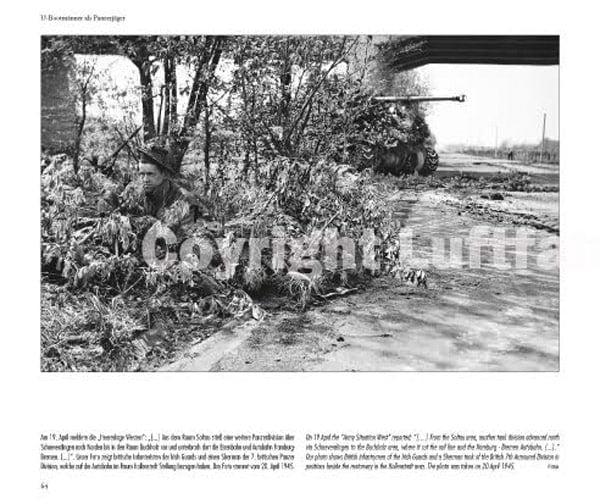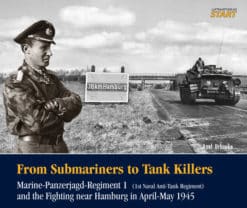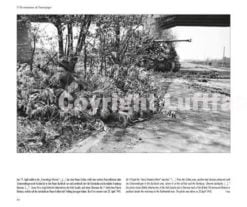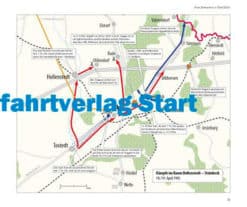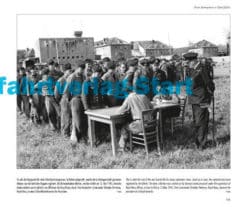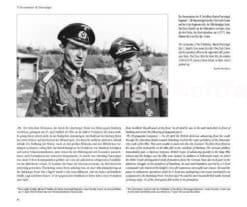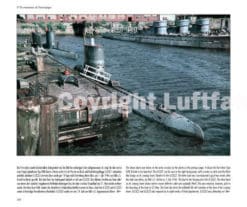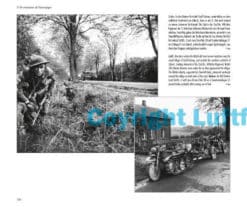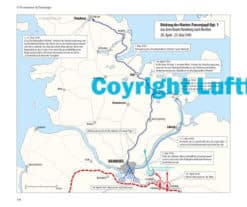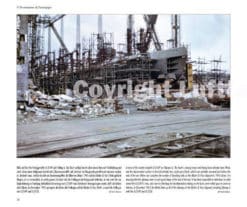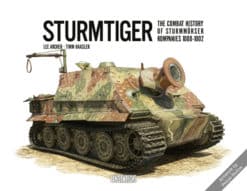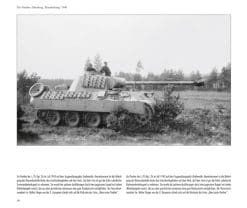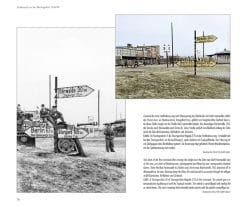No products in the cart.
Submariners to Tank-Killers (U-Bootmänner als Panzerjäger)
£59.99
Luftfahrtverlag-Start’s books are dual English & German language
Out of stock
Join Wait ListSubmariners to Tank-Killers (U-Bootmänner als Panzerjäger)
Submariners to Tank-Killers (U-Bootmänner als Panzerjäger): At the beginning of April 1945, it became clear that the Wehrmacht’s surrender was only a matter of days or weeks away. But despite this hopeless prospect, the German troops still fiercely resisted the enemy. Most of the front-line soldiers had long since given up hope of victory. Other goals now had priority. The way to the west had to be kept open for columns of refugees; steps had to be taken to ensure that civilians and wounded comrades could be evacuated by sea, and a path to the west had to be cleared for their own troops. The spectre on the Eastern Front was that of being overrun by the Russians and then being subjected to their reprisals.
Few people today know that a stubborn fight against the British and Americans was also necessary on the Western Front to achieve these goals. So in April, the Germans were playing for time because every day that the Wehrmacht troops in the West delayed surrender saved the lives of thousands, even tens of thousands of people in the East. But Hitler was still alive and making his unrealistic decisions in Berlin. To oppose his orders in those days could quickly mean death.
In this situation, Hamburg, a city of millions, made preparations to ‘defend to the last round’. Disaster loomed. Due to a lack of troops, at the beginning of April, the High Command of the Wehrmacht increasingly resorted to sailors whose ships had been sunk, were damaged, or are no longer able to sail due to a lack of fuel. Among these men were about 2,000 submariners who had been waiting in the Elbe area for the completion or repair of their U-boats. Now, instead of putting to sea in their boats to fight the enemy, they stood up to the British with Panzerfaust anti-tank weapons as part of the 1st Naval Anti-Tank Regiment. Under the level-headed battle commander of Hamburg, they put up such fierce resistance that time was gained to finally surrender Hamburg without a fight and, by stopping the British at the Elbe, keep the Baltic ports open to refugees for about 14 days longer.
This book is an exciting piece of contemporary history that provides a somewhat different view of the events of that time. Follow the submariners’ fight in the Harburg Hills and on the Elbe, which has never been summarised until today and which saved the lives of tens of thousands of people.
The book supplied will have a German or English cover, but the content of all Luftfahrtverlag-Start’s books is dual English & German.
Book Data
Author: Axel Urbanke
Language: German/English
Pages: 192
Photos: 157, 48 in colour
Maps: 15
ISBN: 9783941437531
Physical: Hardcover, 285x240mm, landscape
Contents
- Foreword
- The Origins of the Marine-Panzerjagd-Regiment 1 in the Run-Up to the Defence of Hamburg
- The Crews Detached from the U-Boats to the Marine-Panzerjagd-Regiment 1
- Formation and Operations by the Marine-Panzerjagd-Regiment 1 and the Fighting for Hamburg from 9 to 28 April 1945
- Negotiations for the Surrender of German Forces and the Handover of Hamburg and the Whereabouts of the Marine-Panzerjagd-Regiment 1 from 29 April to 3 May 1945
- Conclusion
- Production of U-Boats in Hamburg in the Summer of 1944
- Unique Colour Photos of the Production of Type XXI and Type XXIII U-Boats Taken by Walter Prentz
- Construction of Type XXII U-Boats by the Deutsche Werft AG Hamburg 170-191
- Bibliography
You may also like…
-17%
-6%
-2%
-2%



